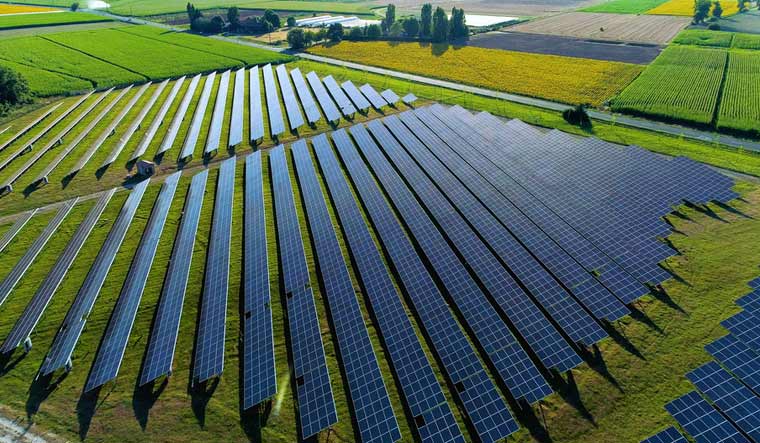New Solar Cell Design Developed by Physicists to Improve Efficiency

February 20, 2024
This article underwent a rigorous review process according to the editorial guidelines and policies of Science X. The Editors emphasized the following points while vouching for the content's credibility:
- fact-checked
- trusted source
- proofread
courtesy of Paderborn University
Paderborn University Physicists have advanced a new design for solar cells that are considerably more effective than earlier versions by using intricate computer simulations. This increase in operational efficiency is credited to a thin layer of organic material called tetracene. The study on these findings has recently been published in Physical Review Letters.
Prof Dr. Wolf Gero Schmidt, physicist and Dean of the Faculty of Natural Sciences at Paderborn University, explains: 'The Sun emits over one trillion kilowatt hours of energy annually. This amount is more than 5,000 times above the worldwide energy requirement. Thus, photovoltaics, power derived from sunlight, has a massive, mostly untapped, capacity for delivering renewable and clean energy. Currently, silicon solar cells used for this purpose overpower the market, but there is a limit to their efficiency'. An explanation for this is the conversion of certain energy-absorbing short-wave radiation into undesirable heat instead of electricity.
Schmidt adds, 'To enhance the efficiency, an organic layer, such as the semi-conductor tetracene for instance, can be added to silicon solar cell. Short-wave light is drawn into this layer and converted into energetic electronic stimulus, otherwise known as excitons. These excitons decompose in the tetracene, generating two low-energy excitations. If these excitations are successfully relocated to the silicon solar cell, the electricity conversion rate can significantly increase, enhancing the overall usable energy yield.'
Critical milestone in rapid energy transfer
The process of exciton transfer from tetracene to silicon is being examined in depth by Schmidt's group, using challenging computer simulations at the university's high-spec computing center, the Paderborn Center for Parallel Computing (PC2). A critical milestone has just been reached. Schmidt, in collaboration with Dr. Marvin Krenz and Prof. Dr. Uwe Gerstmann, both of Paderborn University, have demonstrated that particular defects maximise the speed of exciton transfer; these defects form unsaturated chemical bonds at the nexus between the tetracene layer and the solar cell.
'Such defects occur during the removal of hydrogen and contribute to fluctuating energy with electronic interface states. These fluctuations serve as a vehicle to transfer the electronic excitations from the tetracene to the silicon,' observes Schmidt.
'Defects' in solar cells are commonly linked with energy losses, confounding the importance of these findings from the team of physicists.
'Regarding the interface of silicon and tetracene, defects are crucial for rapid energy transfer. The computer simulations have provided pleasant surprises. These results also provide concrete design pointers for a new type of solar cell with significantly enhanced efficiency', reflects Schmidt.
This information was provided by Paderborn University.




